
The Rhacophoridae are a family of frogs that occur in tropical sub-Saharan Africa, South India and Sri Lanka, Japan, northeastern India to eastern China and Taiwan, south through the Philippines and Greater Sundas, and Sulawesi. They are commonly known as shrub frogs, or more ambiguously as "moss frogs" or "bush frogs". Some Rhacophoridae are called "tree frogs". Among the most spectacular members of this family are numerous "flying frogs".

Eastern spadefoot toads comprise a genus of the family Megophryidae in the order Anura, and are found in southern China, northeast India, southeast Asia, and islands of the Sunda Shelf as well as the Philippines. They are characterized by a stocky body with slender, short hindlimbs. In identifying species, iris colour is a valuable diagnostic morphological characteristic ; the iris has uniform colour in some species, whereas in other species the upper half is coloured and the lower half is dark.

Rhacophorus is a genus of frogs in the shrub-frog family Rhacophoridae, which, with the related Hylidae, is one of the two genera of true tree frogs. They are found in China, India, Japan, and throughout Southeast Asia, including the island of Borneo. Over 40 species are currently recognised.
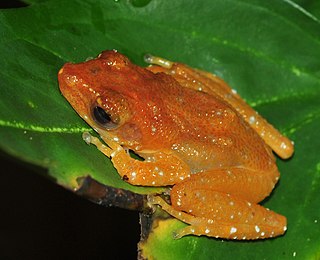
Nyctixalus is a genus of frogs in the family Rhacophoridae. The common name is Indonesian tree frogs. They can be found in the Malay Peninsula, Sumatra, Java, Borneo, the Philippines, and southern Vietnam. Nyctixalus is the sister taxon of Theloderma. It has also been considered subgenus of Theloderma, but the most recent research treat it as a distinct genus.

Kalophrynus is a genus of microhylid frogs. It is the only genus in the subfamily Kalophryninae. The species in this genus are found in southern China, in Southeast Asia to Java and Philippines, and in Assam, India.

Leptolalax is a genus of frogs in the family Megophryidae. They are sometimes known as Asian toads, metacarpal-tubercled toads, or slender litter frogs, although many species-specific common names do not follow these conventions, and many species do not have common names. They are widely distributed in southeastern and eastern Asia, from southern China and northeastern India to the Malay Peninsula and Borneo. Leptolalax are typically small and have a cryptic colour pattern and no obvious morphological characters useful in systematic studies. Consequently, both molecular genetic analyses and analysis of advertisement calls by male frogs have been important in identifying new species.
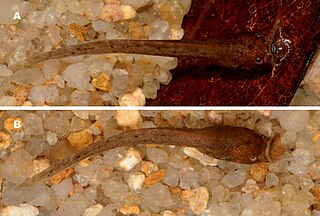
Ophryophryne is a genus of amphibian in the family Megophryidae from Southeast Asia. They are sometimes known as mountain toads.
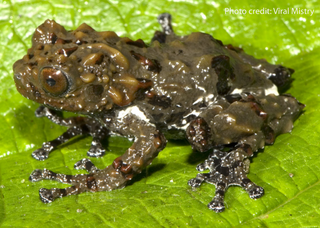
Theloderma moloch, Assam Indonesia tree frog, Eerie tree frog, Xizang warty tree frog, or black-spotted frog is a species of frog in the family Rhacophoridae. It is found in northeastern India and adjacent Tibet, China, possibly wider. Taxonomic placement of this taxon has been a source of much debate, possibly because of wrong tissue was used for it in a molecular study—with ramifications for the taxonomy of whole Theloderma and its sister taxon Nyctixalus.
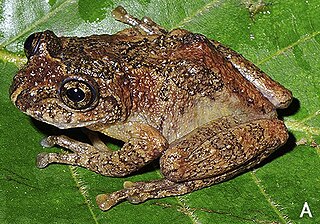
Nasutixalus jerdonii is a species of frog in the family Rhacophoridae. It is found in the northeastern India, in the West Bengal, Nagaland, Manipur, and Meghalaya states. It range might extend into the adjacent Nepal. The specific name jerdonii honours Thomas C. Jerdon, an English herpetologist. Common names Jerdon's bubble-nest frog, Jerdon's tree frog, and Jerdon's bush frog have been coined for this species.

Taruga longinasus is a species of frog in the family Rhacophoridae. It is endemic to Sri Lanka. It has been observed between 150 and 1300 m above sea level.
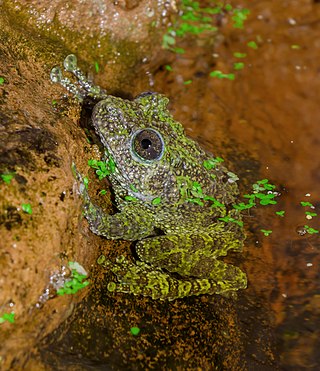
Theloderma corticale is a species of frog in the family Rhacophoridae. It is found in northern Vietnam, south–central Laos, and southern China.
Theloderma palliatum is a species of frog in the family Rhacophoridae. It is endemic to Vietnam and so far only known from the Bidoup Núi Bà and Chư Yang Sin National Parks. This species, together with Theloderma nebulosum, was first found by Australian and Vietnamese scientists in Tay Nguyen in 2011.

Gracixalus is a genus of shrub frogs from south-eastern Asia.

Nasutixalus is a genus of frogs in the family Rhacophoridae. The genus is found in northeastern India and adjacent southeastern Tibet as well as western Yunnan (China); the range might extend into the adjacent Nepal and Myanmar. Common name ridged-nose treefrogs has been coined for this genus.
Vietnamophryne is a divergent genus of Asterophryinae frogs found in Indochina. Its closest relative is the genus Siamophryne. The genus Vietnamophryne was first described by Poyarkov, et al. (2018).

Nanohyla is a genus of frogs in the family Microhylidae. Members of the genus are known as pygmy narrow-mouthed frogs. The members of the genus are found throughout Southeast Asia in the countries of Vietnam, Laos, Cambodia, Thailand, Malaysia, Brunei, Indonesia and the Philippines.
Niane Sivongxay is a zoologist and herpetologist from Laos, who is Director of the South East Asian Ministers of Education Organisation (SEAMEO) Regional Centre for Community Education Development and is Assistant Professor of Biology at the National University of Laos. She specialises in the study of zooplankton, amphibians and reptiles.
Theloderma vietnamense, the South Vietnamese bug-eyed frog or South Vietnamese bug eye frog, is a frog in the family Rhacophoridae. It is endemic to Vietnam, Cambodia, and Laos. It has been observed no higher than 1400 meters above sea level.
Theloderma auratum, the golden bug-eyed frog, is a species of frog in the family Rhacophoridae. It is endemic to Vietnam and predicted in Laos. It has been recorded in montane tropical forest habitats.
Theloderma lacustrinum, the lake bug-eyed frog, is a frog in the family Rhacophoridae. It is endemic to Laos. Scientists know it exclusively from the type locality: Ban Naxang Village near the Nam Lik Reservoir.















